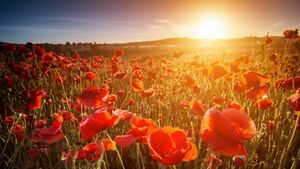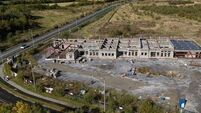Fr Paddy Byrne: Summer Solstice offers opportunity for reflection on creation

x
THESE weeks, many cemetery Masses take place in every parish across the country. I really like these occasions when family and communities unite in the brightest days of the year to remember loved ones gone before us. It is in stark contrast to the month of November, traditionally associated with devotion to the holy souls, when the darkness of winter mirrors the vulnerability of human mortality. In contrast, the summer light of June resonates to the firm Christian hope that resurrection triumphs over darkness, even death itself. Our local cemeteries are extremely well kept. Scripture reminds us it is a “noble endeavour to remember the dead.” May all our loved ones gone before us live in land where it is always summer.
This week happens to be the brightest days of the year. The summer solstice has been celebrated for millennia across various cultures, often with rituals centred on the sun's peak power. In preChristian Europe, Slavic, Germanic and Celtic tribes marked the occasion with bonfires, believing they would enhance the sun's energy for a good harvest and ward off evil spirits. These celebrations were deeply tied to agricultural cycles, ensuring survival through bountiful harvests.
With the rise of Christianity, particularly during the Christianisation of Europe, the Church often integrated existing pagan festivals into its calendar to ease conversion and maintain cultural continuity.
The summer solstice, a significant pagan event, was associated with the feast of St John the Baptist, celebrated on 24 June. This date was strategically chosen, as the Gospel of Luke (Luke 1:26-37, 56-57) states John was born six months before Jesus, whose birth is celebrated on 24 December. Pentecost Sunday, commemorating the descent of the Holy Spirit, often falls about two weeks before the summer solstice, creating a symbolic link between the ‘light’ of Pentecost and the increasing daylight The relationship between the summer solstice and Christianity is primarily through the feast of St John the Baptist, strategically placed near the solstice to blend pagan and Christian traditions. While not a formal Christian holiday, the solstice's timing offers symbolic opportunities for reflection on creation and light, with practices varying by community and individual belief. This historical and cultural synthesis highlights the Church's adaptive approach to integrating pre-existing festivals into its liturgical framework.
Like the growing harvest, our bodies and minds need to indulge in the light and hope of these summer days. Many take a summer break to rejuvenate and find rest. As schools begin summer holiday time, wisdom reminds us “to rest in summer is to weather well the winter storms.”
A prayer for the summer solstice:





